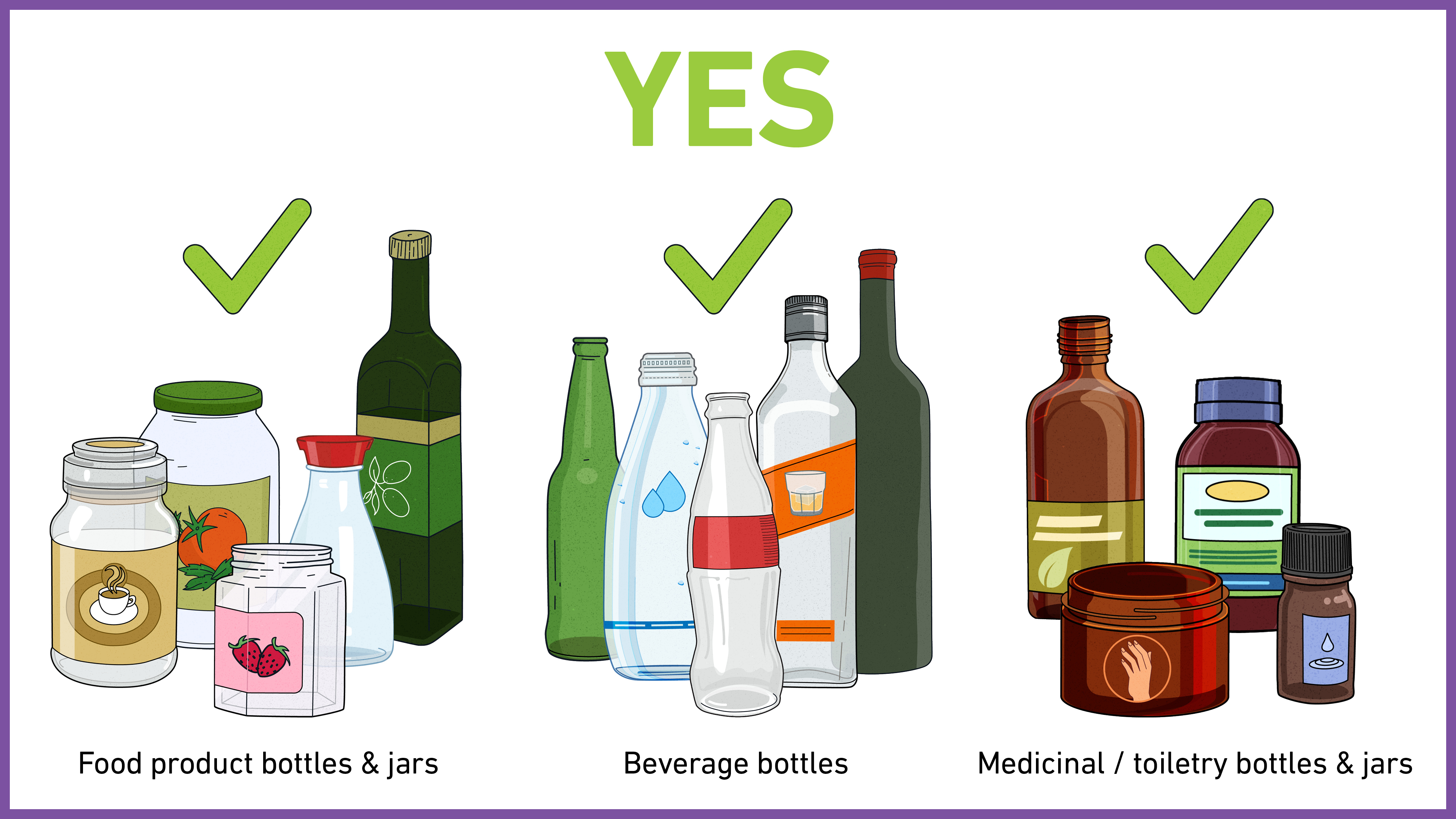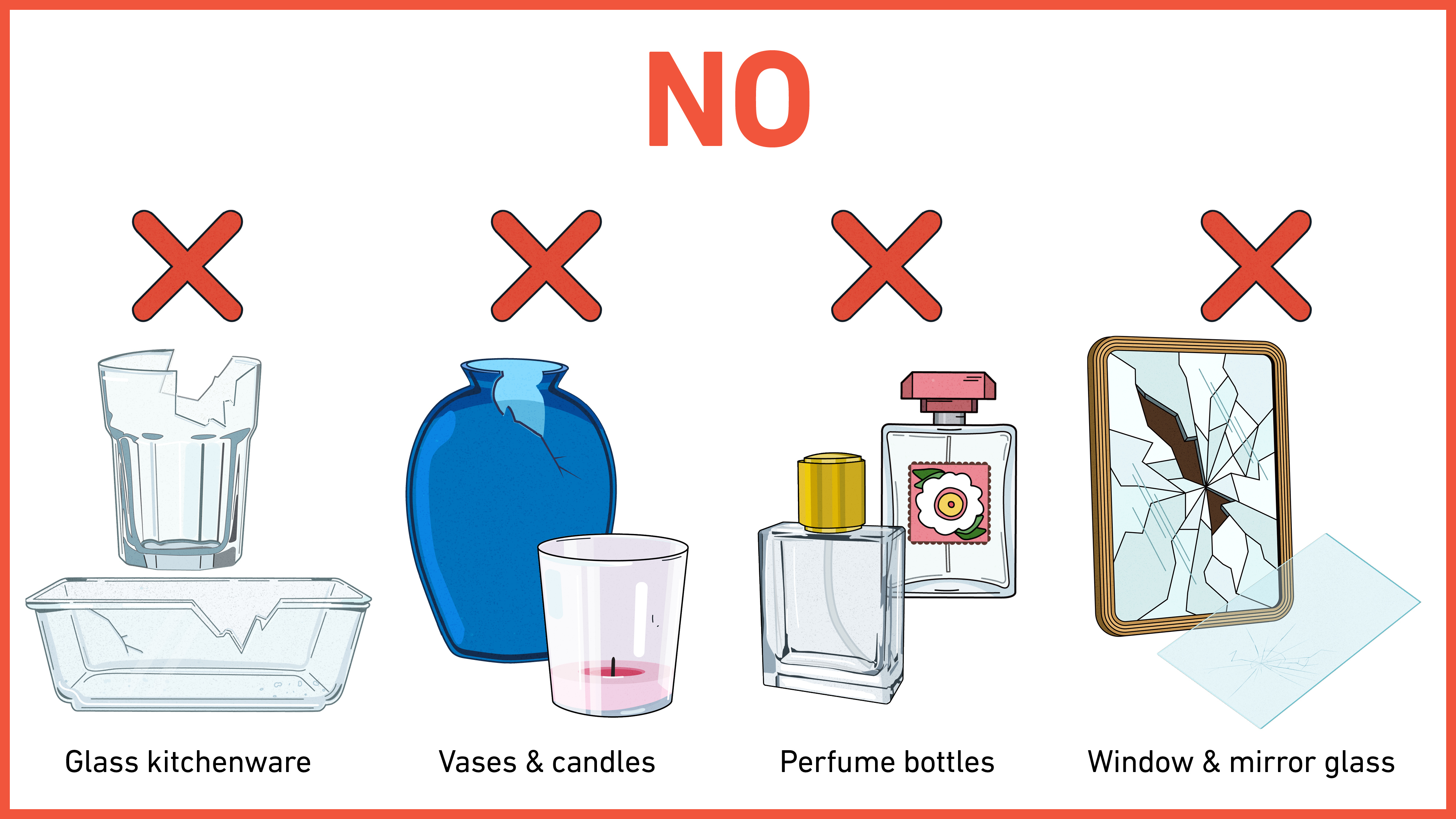How to recycle glass in Victoria
Recycling in Victoria is changing for the better, with new processing facilities and collection services helping us recycle more glass than ever before. Find out what types of glass are accepted for recycling in Victoria, which bins to put glass in, and how glass is recycled.
What types of glass can be recycled?
Different types of glass have different melting and cooling points, so they can’t be recycled together. Find out what kinds of glass can and can’t go in your recycling bin.
Glass items accepted in household recycling bins
In Victoria, you can generally recycle the following types of glass packaging through the kerbside recycling system:
- Bottles and jars from foods (sauces, condiments, oil, pasta sauce, jam, spreads, pickles, coffee etc.)
- Beverage bottles (from soft drinks, juice, water, milk, beer, wine and spirits)
- Medicine and toiletry jars and bottles (from medicines like cough syrup, vitamins, supplements, and cosmetics such as lotions and oils)
Place these items in your purple glass bin, or your mixed recycling bin if you don’t have a purple glass bin yet.
Scrape out food and lightly rinse bottles and jars before putting them in the recycling bin.
Small glass beverage bottles can be returned for a 10-cent refund through the container deposit scheme (CDS Vic) as well.

Glass items NOT accepted in household recycling bins
Some glass items melt differently, which means they can’t be recycled with bottles and jars. They must go in the rubbish bin.
This includes:
- Drinking glasses
- Windows
- Mirrors
- Vases
- Cooking dishes
- Perfume bottles

Currently, items accepted in recycling bins may vary slightly across the state. There are also different rules about whether lids should be attached to bottles and jars or not.
Which bin does glass go in?
Soon, all Victorian councils will provide their communities with the same 4-bin system, including purple-lidded bins for glass recycling and yellow-lidded bins for mixed recycling.
While we transition to the new system, glass may go in different bins depending on which local government area you are in:
- If you have a purple glass bin, put all your glass bottles and jars into it. No glass is accepted in mixed recycling bins when a separate purple glass bin is available.
- If you do not have a purple bin yet, glass bottles and jars can still go into the mixed recycling bin (which usually has a yellow lid).
Check the local council website if you are unsure.
Why do we need separate bins for glass?
Glass is a valuable resource. So are paper, cardboard and plastic. But when glass breaks in the mixed recycling bin, the shards of glass contaminate other materials – making them all harder to recycle.
When glass bottles and jars are separated into their own bin, more of your recyclable materials can be recovered and turned into new things, so your sorting efforts won’t go to waste. For example, preventing paper and cardboard from being contaminated with glass shards means we can make more recycled paper and cardboard products (and cut down fewer trees).
Victoria will soon be the first state in Australia to have a separate glass recycling service, helping us recycle more than ever before. Just like the global top 5 recycling nations, which all collect glass separately.
Glass makes up about 27% of the weight of mixed recycling from households.
How does glass get recycled?
There are several glass recycling facilities in Victoria, and more than 99% of the glass packaging recovered here is processed locally.
Glass can be remanufactured into packaging through the following process:
- Glass bottles and jars are transported to a place called a ‘beneficiation facility’ for initial sorting.
- They are washed and labels and lids are removed (with metal lids collected for recycling).
- Glass is sorted by colour (green, amber and clear) using optical sorting machines.
- Sorted glass is sent to a manufacturing facility.
- It is melted down and remade into new bottles and jars.
Glass can be recycled like this over and over without degrading: it’s a great example of a circular process keeping valuable resources in use.
When remanufacturing isn’t viable, glass might be transported to a crushing facility instead. There, it gets washed and crushed to a consistent size to create recycled glass sand that can be used in construction of things like roads and bike paths.